Scorpion - what, if it finds new home on your private balcony?
- Written by Portal Editor
Scorpion - Wildlife on the balcony - the surprise of finding an alive scorpion was splitting our mind about wildlife, because on the balcony, despite all the love for nature, is it that what you really want?
So we were, at first, amazed to see the 8 cm long animal shown in the images - which we found between the timbers of our balcony. Still greater was the surprise of how quick a Scorpion can move when trying to motivate him to "move" for a another home.
Scorpion - supposed to ward off the evil eye - pure mythology?
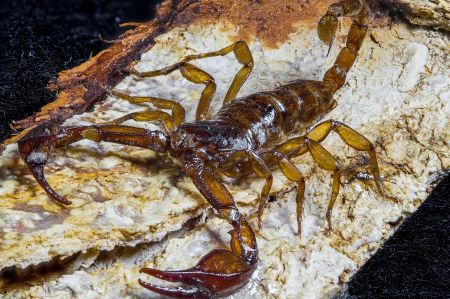 As a mural in the house, scorpion, similar to the blue glass eye avert the evil, which is why you can often find their image or symbol on lamps and other objects. As symbolic talisman, a scorpion even today is said to protect the town Homs in Syria (even the still lasting conflict does not really show that) as well as real scorpions and snakes protected the ancient city of Emesa. Once that in the fertile valley of the Nahr al-Asi located Homs (designated Orontes in antiquity), is currently severely affected by the civil war in Syria.
As a mural in the house, scorpion, similar to the blue glass eye avert the evil, which is why you can often find their image or symbol on lamps and other objects. As symbolic talisman, a scorpion even today is said to protect the town Homs in Syria (even the still lasting conflict does not really show that) as well as real scorpions and snakes protected the ancient city of Emesa. Once that in the fertile valley of the Nahr al-Asi located Homs (designated Orontes in antiquity), is currently severely affected by the civil war in Syria.
Scorpions in the cultural history of mankind play a major role for thousands of years. They are usually represented in legends and myths as dangerous, deadly creatures. Scorpion I. is the earliest known king of ancient Egypt, which has chosen, at the beginning of human history, a scorpion as symbol for his power.
Already the Sumerian Epic of Gilgamesh talked about Scorpion people whose torso has human shape while the lower body has scorpion shape. As the hero Gilgamesh enters the mountain Maschu to ask about such a Scorpion man, he met a Scorpion woman on the path whose "awfulness is enormous, the sight of which is death." Never there has been a man dared to go this route, but Gilgamesh manages to convince the scorpions, so they let him pass.
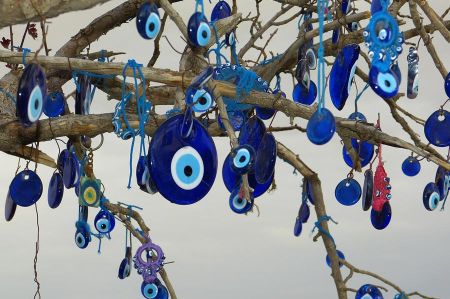 The Egyptian mythology knows the goddess Selket which is always depicted with a scorpion on her head. It has magical healing powers and preserved from scorpion stings, which is why it is called in respective warden. As the goddess Isis is threatened by Seth, she sends out seven scorpions to protect herself. Hedetet has the lower body of a scorpion. Even the Punic god of healing Schadrapa was presented with snake or scorpion.
The Egyptian mythology knows the goddess Selket which is always depicted with a scorpion on her head. It has magical healing powers and preserved from scorpion stings, which is why it is called in respective warden. As the goddess Isis is threatened by Seth, she sends out seven scorpions to protect herself. Hedetet has the lower body of a scorpion. Even the Punic god of healing Schadrapa was presented with snake or scorpion.
In Greek mythology, the angry goddess Artemis shows a scorpion, killing the hunter Orion with a stitch. Both are then added together as constellations in the sky. Their enmity continues living there, because you will never see the two constellations at the same time.
Even in the biblical Book of Revelation scorpions occur during the Apocalypse. The fifth book calls forth locusts who is receiving a force, "as scorpions of the earth." (Rev. 9.3 EU). The pain caused by them will be compared with that of a stinging Scorpion (Rev. 9.5 EU), because they have tails with stings like scorpions, and insert to harm people for five months (Rev. 9.10 EU).
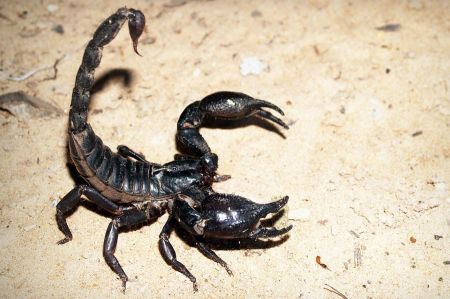 "Oh, full of scorpions is my mind," says MacBeth in Shakespeare's play (Act III, Scene 2) after the treacherous dagger murder. Gottlieb Konrad Pfeffel´s poem "Scorpion and Hirtenknabe" warns about evil men. Anna Elisabet Weirauch wrote "The Scorpion" (1919), Anna-Leena Härkönen (see Regine Pirschel) "The sad Scorpion" (1989). Bruna Surfistinhas "The sweet poison of the Scorpion" (2007) dealt with prostitution. Hinrich Matthiesen "The Scorpion" (2015) is a thriller. Scorpion stings appearing in John Steinbeck's novel "The Pearl", in the films "Blue Paradise" (1982) and in "The Last Mistress" (2007). Scorpions are overlooking ancient Egyptian mythology and the same constellation of fantasy - like science fiction - works.
"Oh, full of scorpions is my mind," says MacBeth in Shakespeare's play (Act III, Scene 2) after the treacherous dagger murder. Gottlieb Konrad Pfeffel´s poem "Scorpion and Hirtenknabe" warns about evil men. Anna Elisabet Weirauch wrote "The Scorpion" (1919), Anna-Leena Härkönen (see Regine Pirschel) "The sad Scorpion" (1989). Bruna Surfistinhas "The sweet poison of the Scorpion" (2007) dealt with prostitution. Hinrich Matthiesen "The Scorpion" (2015) is a thriller. Scorpion stings appearing in John Steinbeck's novel "The Pearl", in the films "Blue Paradise" (1982) and in "The Last Mistress" (2007). Scorpions are overlooking ancient Egyptian mythology and the same constellation of fantasy - like science fiction - works.
But poisonous animal is also found in diverse uses in folks medicine. Megenberg was able to use scorpion ash mixed in wine and oil to rub the sting sites, help to fight the poison of the animal. The "Skorpenoil" was obtained by immersing living scorpions in olive oil and then heating it. This oil should heal various ailments, including sores, colic, gout, and earaches. In Tirol people used the oil even against urinary, against the plague and against bee and wasp stings. The gall of Scorpions was used against eye diseases and skin beautification.
To be compared to the face of a chaste virgin
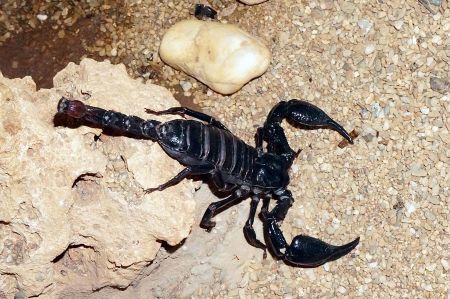 In superstition and folk medicine they play a major role, especially because of its poison. Conrad of Megenberg described the animals in his book of nature as "a snake, which has an even delicate face, to compare the face of a chaste virgin. Who is poisoned by the scorpion, has three days left before he must die."
In superstition and folk medicine they play a major role, especially because of its poison. Conrad of Megenberg described the animals in his book of nature as "a snake, which has an even delicate face, to compare the face of a chaste virgin. Who is poisoned by the scorpion, has three days left before he must die."
It conducts its description further by reports of two prickly "animals", of which Aristotle has reported. Among the pigs, the poison only kills black pigs sure if this accelerates to go into the water. In human beings, the scorpion also reaches only hairy parts of the body and never prick in the hollow of hand. Another curiosity Conrad of Megenberg knows to report:
"If you drown a scorpion into oil and spill vinegar upon it in sunlight, it will immediately come back to life. The oil will clog the small holes in its body, the hot humans welding holes and Latin Pori. The vinegar opens the Scorpion´s pores again. "
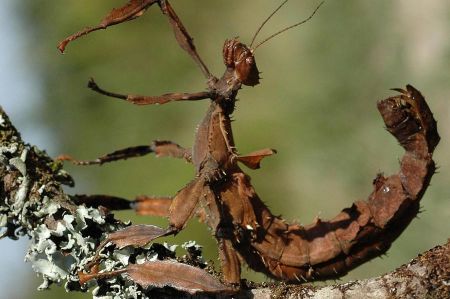 More interesting stories were spread about the origin of the scorpions. In ancient times it was done by Otto Keller's "Ancient wildlife". The idea scorpions could derive from dead crocodiles or (according to Pliny) of buried sea-crabs when the sun traverses the constellation of Cancer. Due to Paracelsus scorpions arose from rotting fellows who killed somebody. Similarly, the idea that young scorpions eat from the belly of their mother occurs.
More interesting stories were spread about the origin of the scorpions. In ancient times it was done by Otto Keller's "Ancient wildlife". The idea scorpions could derive from dead crocodiles or (according to Pliny) of buried sea-crabs when the sun traverses the constellation of Cancer. Due to Paracelsus scorpions arose from rotting fellows who killed somebody. Similarly, the idea that young scorpions eat from the belly of their mother occurs.
In German superstition the scorpion is said to fly at night and leave everything it touches dry up. As constellation the animal appeared already in calendar drawings of the Babylonians.
All these mythologies and stories prompted us even with caution and extensive discussions too, but could not really prevent the relocation of the Scorpion. So we were happy in the end, we could harmlessly resettle our guest back into real nature.
Please read as well:
Modern way of animal and plant identification
Meeting an active squirrel at the castle in Ohrid
-
 Scorpion at home
Scorpion at home
Scorpion at home
Scorpion at home
-
 Scorpion at home
Scorpion at home
Scorpion at home
Scorpion at home
-
 Scorpion at home
Scorpion at home
Scorpion at home
Scorpion at home
-
 Scorpion at home
Scorpion at home
Scorpion at home
Scorpion at home
-
 Scorpion at home
Scorpion at home
Scorpion at home
Scorpion at home
-
 Scorpion at home
Scorpion at home
Scorpion at home
Scorpion at home
https://www.alaturka.info/en/life/fauna/3712-scorpion-what-if-it-finds-new-home-on-your-private-balcony?layout=default#sigProId1c08fc8acc
